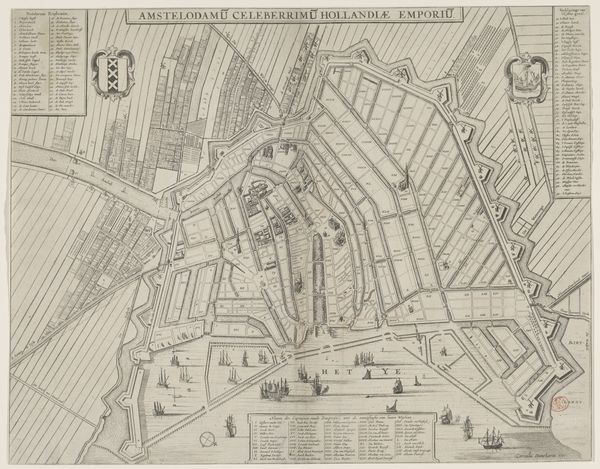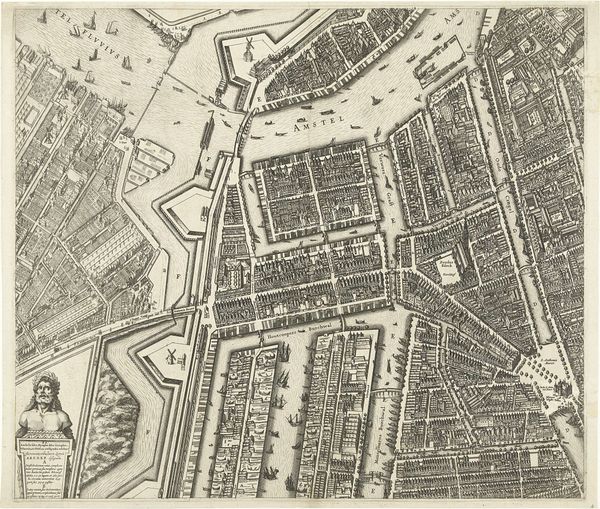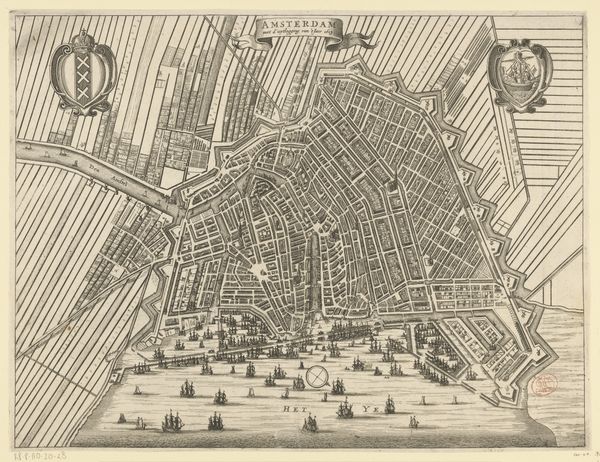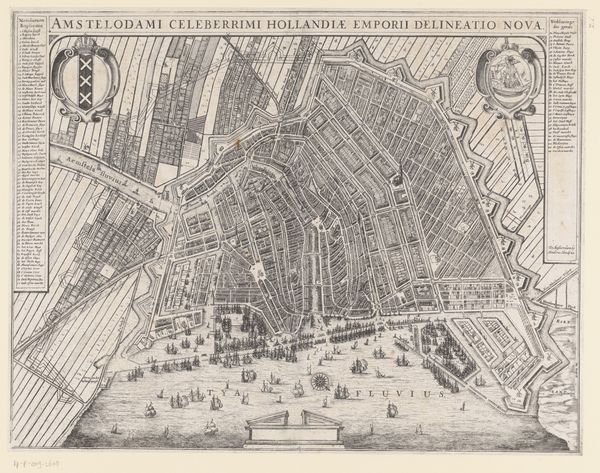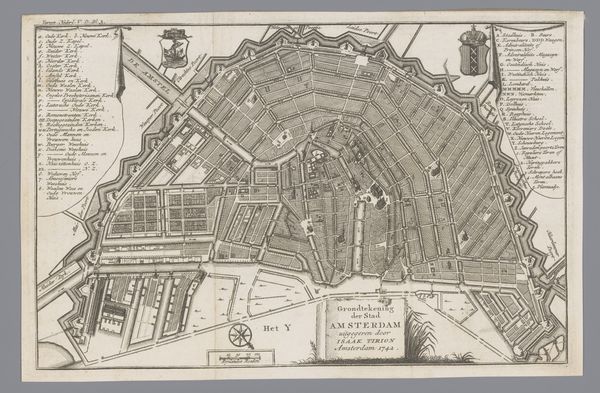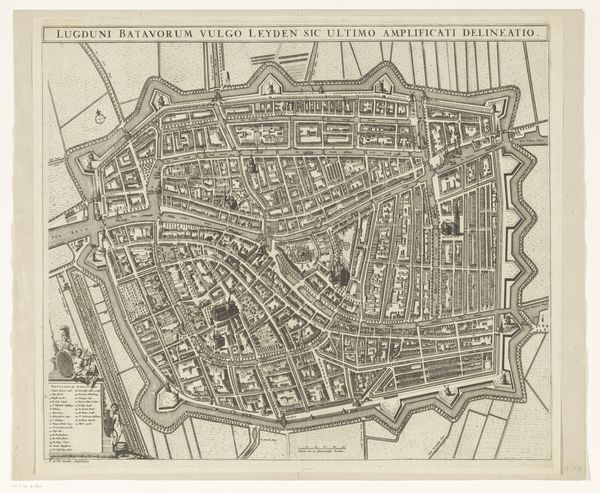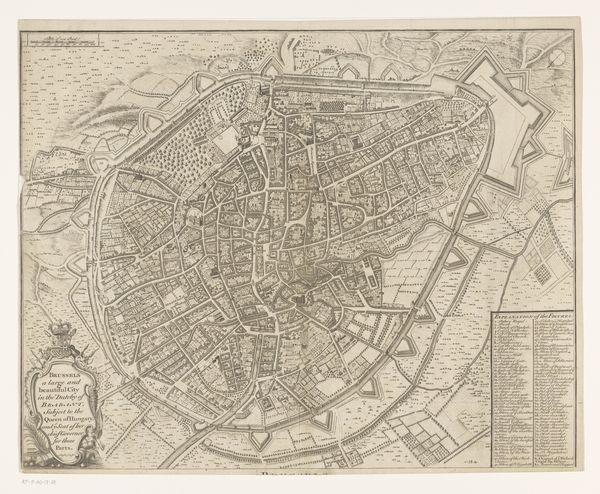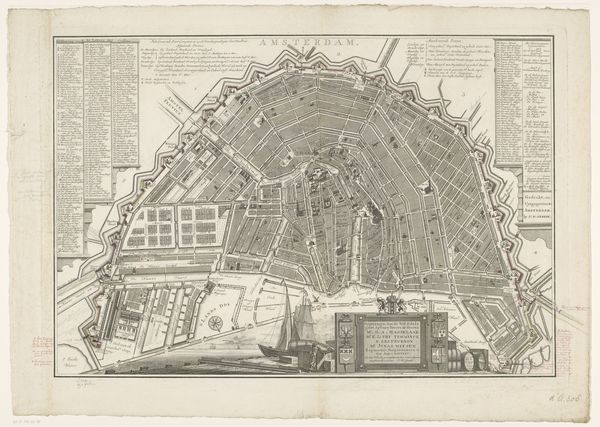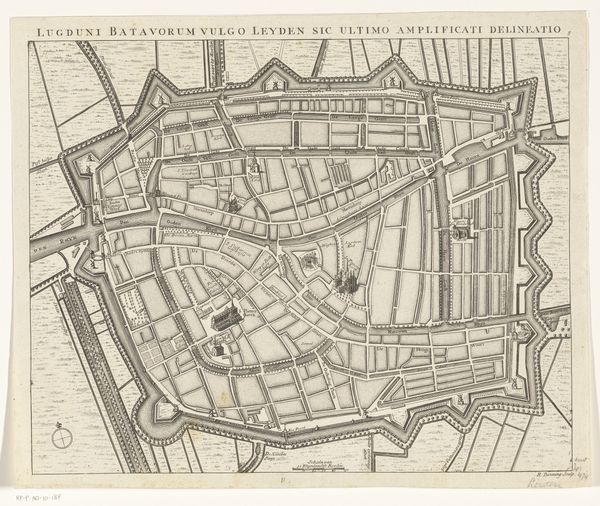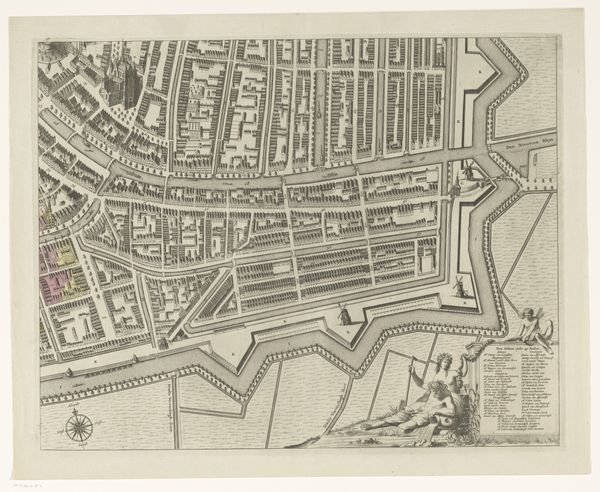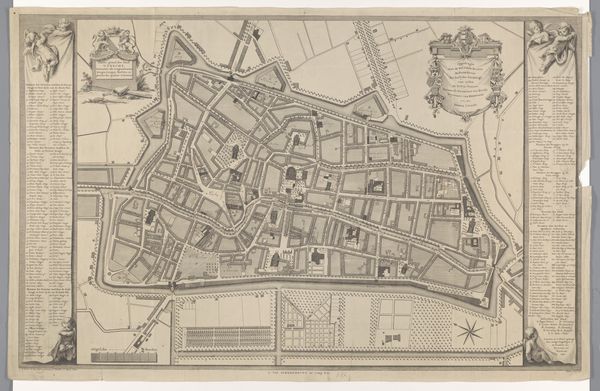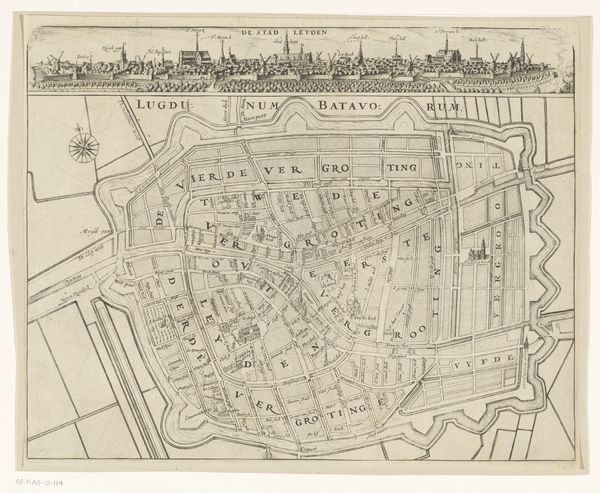
drawing, paper, ink, engraving
#
drawing
#
dutch-golden-age
#
pen sketch
#
landscape
#
paper
#
ink
#
geometric
#
line
#
cityscape
#
engraving
#
realism
Dimensions: height 618 mm, width 977 mm
Copyright: Rijks Museum: Open Domain
Curator: Today, we’re looking at a detailed ink drawing from 1798 by Cornelis van Baarsel: "Plattegrond van Amsterdam"—a plan of Amsterdam. Editor: The sheer density of lines is the first thing that strikes me. It almost vibrates with detail. A mesmerizing display of ordered chaos, or perhaps a chaotic order? Curator: Indeed. And I think this piece can be read as an index of the social structures of the period. Notice the distinct sectors of the city, each with its unique architectural markers, suggesting a very stratified society, not unlike contemporary parallels we might draw with other metropolises in the world. Editor: I’m drawn to the radial design of the canals. From a purely formal standpoint, this creates a stunning visual rhythm, pulling the eye towards the center, then releasing it outwards. A network rendered with such graphic precision, turning utility into art. Curator: Absolutely, and we might further examine the relationship between this aesthetic order and the exercise of power. City planning was, and is, never politically neutral. Here, the design might implicitly convey a message of Dutch ingenuity and control, mirroring broader colonial endeavors in a moment of increased revolutionary activity within and outside of the country's borders. Editor: You highlight an important tension between representation and reality. On one hand, it seems so objective. On the other, this order is definitely an idealized vision, a projection of how the city *should* function. It speaks to the complexities that are always found in utopian planning, both spatial and societal. Curator: A sentiment I completely echo. Thinking about the engraver, the act of mapping was clearly not only a scientific but also a profoundly ideological and aesthetic enterprise, that can speak to how national identity was formed and consolidated at a very pivotal point in Dutch and European history. Editor: Precisely. I find it interesting how this map encourages a dialogue between precision and imagination, representation and abstraction. An almost sculptural exercise in visualizing information that makes it so captivating. Curator: Indeed. I find myself re-thinking our reliance on maps. I never before questioned whose reality are these navigations reflecting. Editor: It's definitely food for thought, even in our era of ubiquitous GPS!
Comments
No comments
Be the first to comment and join the conversation on the ultimate creative platform.
